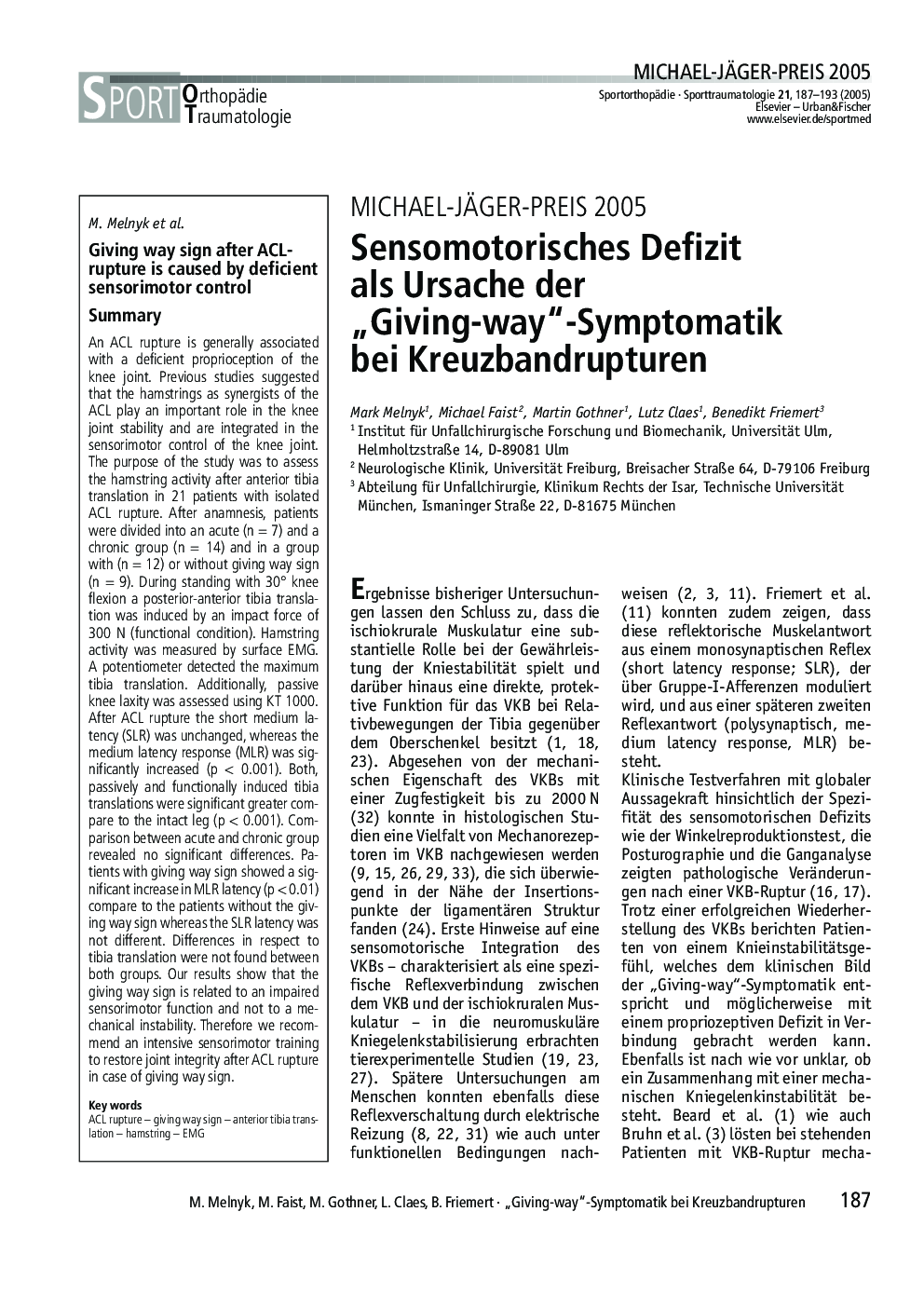| کد مقاله | کد نشریه | سال انتشار | مقاله انگلیسی | نسخه تمام متن |
|---|---|---|---|---|
| 9089156 | 1148500 | 2005 | 7 صفحه PDF | دانلود رایگان |
عنوان انگلیسی مقاله ISI
MICHAEL-JÃGER-PREIS 2005
دانلود مقاله + سفارش ترجمه
دانلود مقاله ISI انگلیسی
رایگان برای ایرانیان
موضوعات مرتبط
علوم پزشکی و سلامت
پزشکی و دندانپزشکی
طب اورژانس
پیش نمایش صفحه اول مقاله

چکیده انگلیسی
An ACL rupture is generally associated with a deficient proprioception of the knee joint. Previous studies suggested that the hamstrings as synergists of the ACL play an important role in the knee joint stability and are integrated in the sensorimotor control of the knee joint. The purpose of the study was to assess the hamstring activity after anterior tibia translation in 21 patients with isolated ACL rupture. After anamnesis, patients were divided into an acute (n = 7) and a chronic group (n = 14) and in a group with (n = 12) or without giving way sign (n = 9). During standing with 30° knee flexion a posterior-anterior tibia translation was induced by an impact force of 300 N (functional condition). Hamstring activity was measured by surface EMG. A potentiometer detected the maximum tibia translation. Additionally, passive knee laxity was assessed using KT 1000. After ACL rupture the short medium latency (SLR) was unchanged, whereas the medium latency response (MLR) was significantly increased (p < 0.001). Both, passively and functionally induced tibia translations were significant greater compare to the intact leg (p < 0.001). Comparison between acute and chronic group revealed no significant differences. Patients with giving way sign showed a significant increase in MLR latency (p < 0.01) compare to the patients without the giving way sign whereas the SLR latency was not different. Differences in respect to tibia translation were not found between both groups. Our results show that the giving way sign is related to an impaired sensorimotor function and not to a mechanical instability. Therefore we recommend an intensive sensorimotor training to restore joint integrity after ACL rupture in case of giving way sign.
ناشر
Database: Elsevier - ScienceDirect (ساینس دایرکت)
Journal: Sports Orthopaedics and Traumatology Sport-Orthopädie - Sport-Traumatologie - Volume 21, Issue 3, September 2005, Pages 187-193
Journal: Sports Orthopaedics and Traumatology Sport-Orthopädie - Sport-Traumatologie - Volume 21, Issue 3, September 2005, Pages 187-193
نویسندگان
Mark Melnyk, Michael Faist, Martin Gothner, Lutz Claes, Benedikt Friemert,